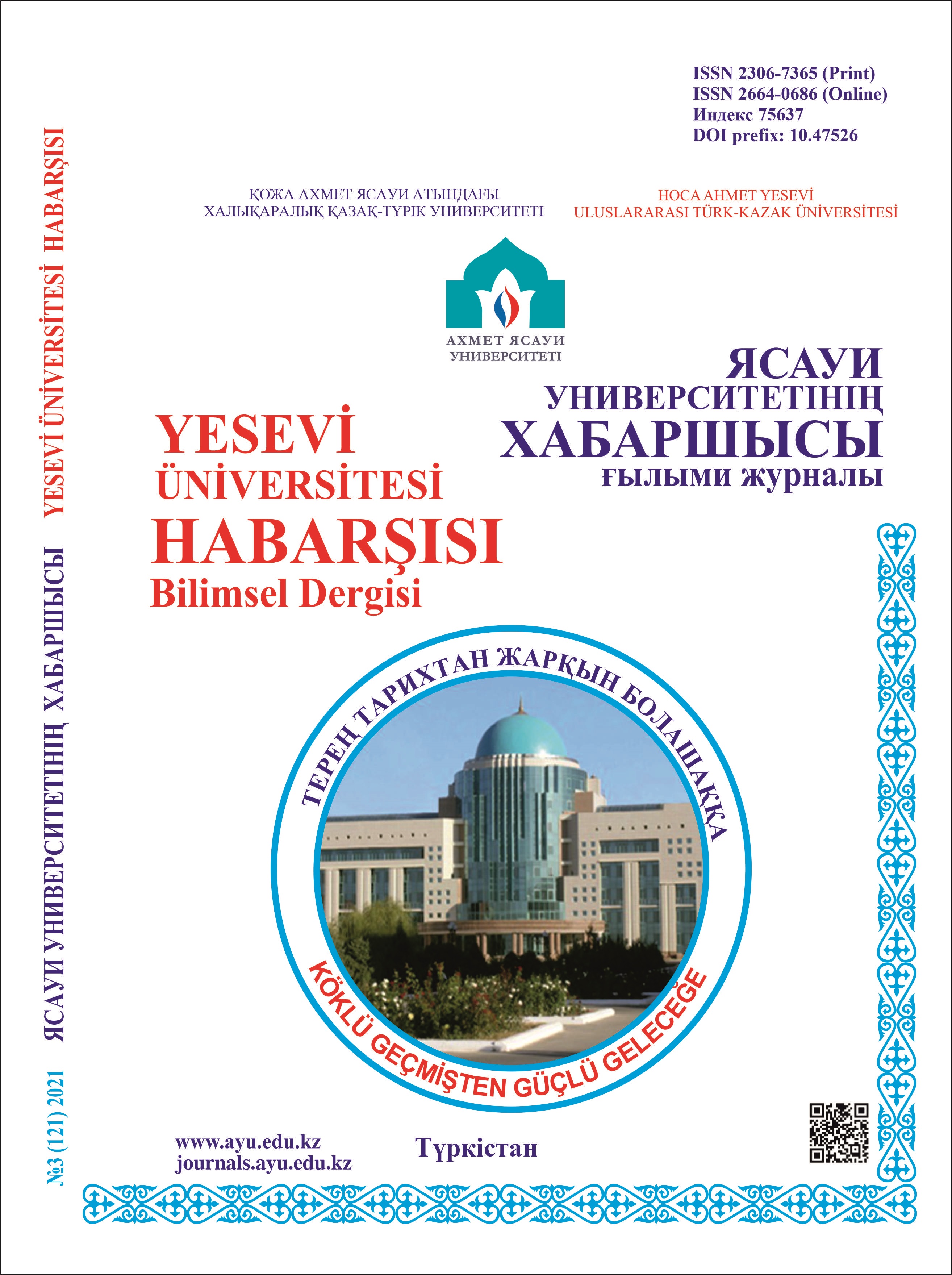Relatıons wıth Byzantıne Empıre Durıng The Prophet’s Tıme (Pbuh)
Keywords:
The Prophet, Islam, Byzantium, Heraclius, Battle of Mu'tah, Expedition of Tabuk.Abstract
The period of Muhammad [pbuh] is the most important time period of whole 15-century Islamic history. It is because his sayings and habits had become a source of influence for later periods. As being the head of state of Islam based in Madina, his relations with the two super power states of the world at that time, Sasanids and Byzantines are substantial examples.
The north side of the Arabian peninsula, at the time Muhammad [pbuh] was preaching Islam to the people of Macca, were hosting a power struggle between Sasanids and Byzantines. In this time, the polytheist heathen people of Macca were supporting the Zoroastrian Sasanids’ side, while Muslims who embrace the «tawhid» faith were having a sympathy for Byzantine empire, whom were Christians, the people of the book. In the seventh year of hijra towards Madina [AD 628], the prophet had sent letters to many prominent leaders of his time, inviting them to Islam. One of these prominent leaders were the Byzantine emperor, Heraclius, whom accepted the ambassador Dihya ibn Khalifa al-Kalbi during his visit at Jerusalem. The prophet also sent envoys to Byzantine governor of Egypt and emir of Ghassanids, a Byzantine alley, to invite them to Islam. The emir of Ghassanids’ killing the ambassador of Islamic state who was sent to Bosra governor, led to a new crisis. As the emir had called for Byzantines to help against troops that were sent by Islamic state, Muslims had faced up against the army of Byzantine empire for the first time, during Battle of Mu'tah [8/629]. At this battle, the Islamic army was forced to leave the war area due to Byzantine-Ghassanids’ numerical superiority. In the 9th year of Hijra [AD 630] following the reports of Byzantine empire preparing armies to attack to lands of Islam, Prophet went on an expedition as the head of 30.000 people large army. The army had reached towards Tabuk, however, as Byzantine army have had not seen anywhere, the army had returned. Meanwhile, military units were sent to some of the settlements near and the region was taken under control.
References
Georg Ostrogorsky, Bizans Devleti Tarihi [History of the Byzantine State] / Çev. Fikret Işıltan. – Ankara: Türk Tarih Kurumu, 1991. – 582 s. [in Turkish]
Stratos A.N. Byzantium in the Seventh Century 602-634 (trc. M. O. Grant), Adolf M. Hakkert, Amsterdam 1968.
Işın Demirkent, “Herakleios”, Türkiye Diyanet Vakfı İslâm Ansiklopedisi (DİA), XVII, 211. [in Turkish]
Ebû İshâk el-Fezârî, Kitâbü’s-Siyer [The Book of al-Sîrah] (nşr. Fârûk Hamâde), Müessesetü’r-Risâle, Beyrut1987. [in Arabic]
Taberî, Câmi‘u’l-beyân fî Tefsîri’l-Kur’ân [Interpretation of the Qur’an], el-Matba‘atü’l-Meymeniyye, Mısır 1321. [in Arabic]
Casim Avcı, İslâm-Bizans İlişkileri (610-847) [Relations between Byzantium and Islam], Türk Tarih Kurumu, Ankara 2018. [in Turkish]
İbn Kesîr, Tefsîru’l-Kur’âni’l-Azîm [Interpretation of the Qur’an] , Dâru İhyâ’i’t-Türâsi’l-Arabî, Kahire 1971. [in Arabic]
Sarıçam, İbrahim, Hz. Muhammed ve Evrensel Mesajı [The Prophet Muhammad and His Universal Message], Diyanet İşleri Başkanlığı Yayınları, Ankara 2012. [in Turkish]
Buhârî, Sahîhu’l-Buhârî, I-VIII, Çağrı Yayınları: İstanbul 1981. [in Arabic]
Müslim, Sahîhu Müslim, I-V, Çağrı Yayınları: İstanbul 1981. [in Arabic]
Taberî, Târîhu’l-Ümem ve’l-Mülûk [History of Nations and Kings] [Nşr. Ebü’l-Fazl İbrahim], I-XI, Dâru Süveydân, Beyrut, 1967. [in Arabic]
Hamidullah, Muhammed, İslâm Peygamberi [The Prophet of Islam] [Çeviren: Salih Tuğ], I-II, İrfan Yayınevi, İstanbul 1990. [in Turkish]
A. Öngül, “Dagâtır”, DİA, VIII, 399, 400. [in Turkish]
İbn Sa‘d, et-Tabakâtü’l-Kübrâ [The Book of Major Classes], Dâru Sâdır, Beyrut 1985. [in Arabic]
Hamidullah, Muhammed, Hz. Peygamber’in Altı Orijinal Mektubu [Six Orijinal Letters of the Prophet Muhammad] [Çev. Mehmet Yazgan], İrfan Yayınevi, İstanbul 1990. [in Turkish]
Theophanes, The Chronicle of Theophanes A.D. 602-813 [trc. Harry Turtledove], University of Penncylvania, Philadelphia 1982.
Nikephoros, Short History (nşr. ve trc. Cyril Mango), Dumbarton Oaks Research Library and Collection, Washington, D.C. 1990 s. 67, 185 (Neşredenin notu).
İbn Hişâm, es-Sîretü’n-Nebeviyye [The Life of the Prophet] [Neşreden: Muhammed es-Sakkâ ve dğr.] I-IV, Mustafa el-Bâbî el-Halebî, Kahire 1955. [in Arabic]
İbn Sa‘d, et-Tabakâtü’l-Kübrâ [The Book of Major Classes] [Nşr. İhsan Abbas], I-IX, Dâru Sâdır, Beyrut 1985. [in Arabic]
Vâkıdî, Kitâbü’l-Megâzî [The Military Operations of the Prophet], Neşreden: Marsden Jones, IIII, Alemü’l-Kütüb, Beyrut 1404/1984. [in Arabic]
İsmail Yiğit, “Tebük Gazvesi”, DİA, XL, 230. [in Turkish]
Ahmed b. Hanbel, Müsned, I-V, Çağrı Yayınları: İstanbul 1981. [in Arabic]
Ebû Ubeyd, Kitâbü’I-Emvâl [The Book of Treasure] (nşr. H.M. Herâs), Mektebetü Külliyyât’il-EzheriyyeKahire 1968. [in Arabic]

